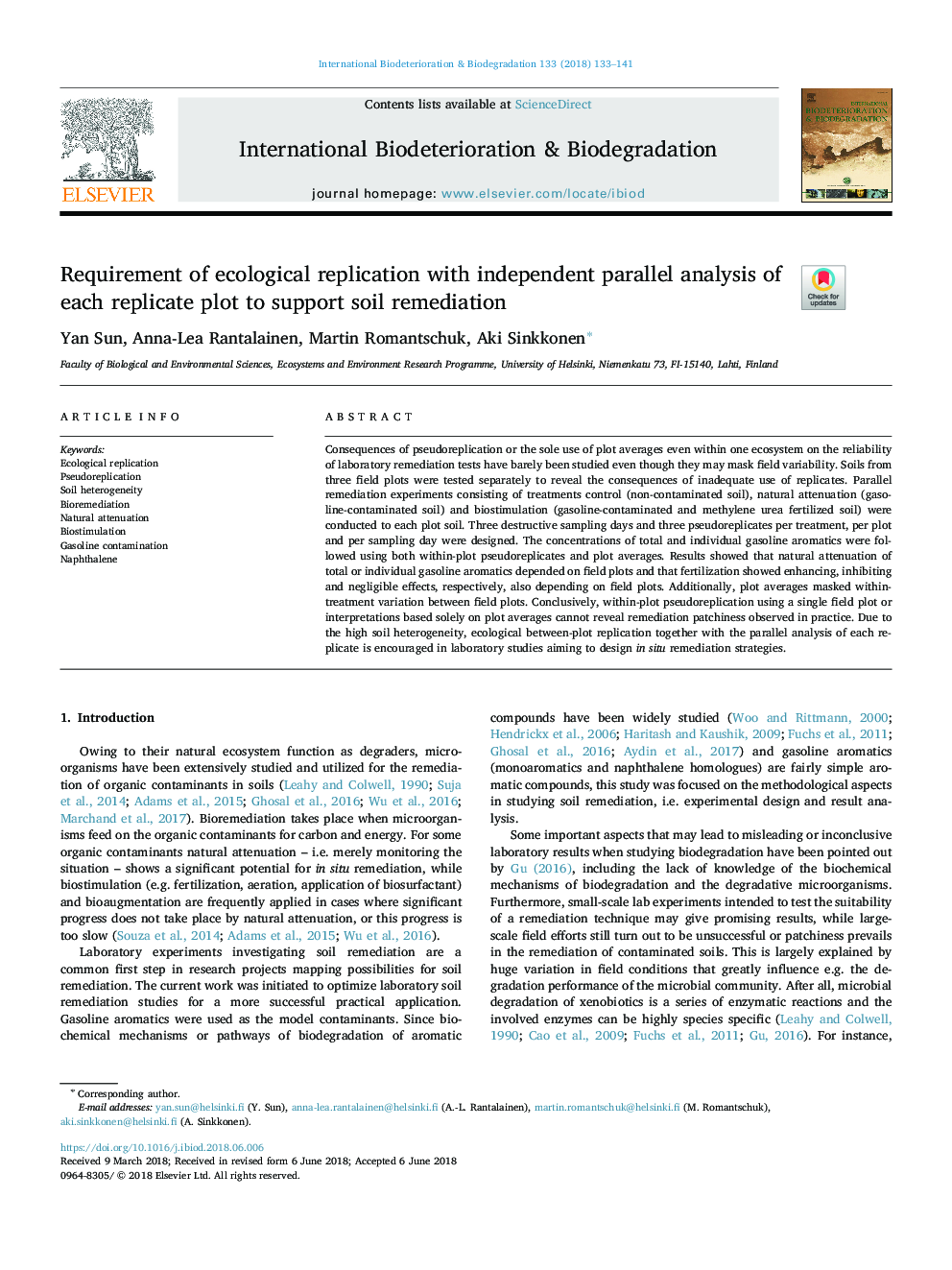| Article ID | Journal | Published Year | Pages | File Type |
|---|---|---|---|---|
| 8843698 | International Biodeterioration & Biodegradation | 2018 | 9 Pages |
Abstract
Consequences of pseudoreplication or the sole use of plot averages even within one ecosystem on the reliability of laboratory remediation tests have barely been studied even though they may mask field variability. Soils from three field plots were tested separately to reveal the consequences of inadequate use of replicates. Parallel remediation experiments consisting of treatments control (non-contaminated soil), natural attenuation (gasoline-contaminated soil) and biostimulation (gasoline-contaminated and methylene urea fertilized soil) were conducted to each plot soil. Three destructive sampling days and three pseudoreplicates per treatment, per plot and per sampling day were designed. The concentrations of total and individual gasoline aromatics were followed using both within-plot pseudoreplicates and plot averages. Results showed that natural attenuation of total or individual gasoline aromatics depended on field plots and that fertilization showed enhancing, inhibiting and negligible effects, respectively, also depending on field plots. Additionally, plot averages masked within-treatment variation between field plots. Conclusively, within-plot pseudoreplication using a single field plot or interpretations based solely on plot averages cannot reveal remediation patchiness observed in practice. Due to the high soil heterogeneity, ecological between-plot replication together with the parallel analysis of each replicate is encouraged in laboratory studies aiming to design in situ remediation strategies.
Keywords
Related Topics
Life Sciences
Environmental Science
Environmental Science (General)
Authors
Yan Sun, Anna-Lea Rantalainen, Martin Romantschuk, Aki Sinkkonen,
